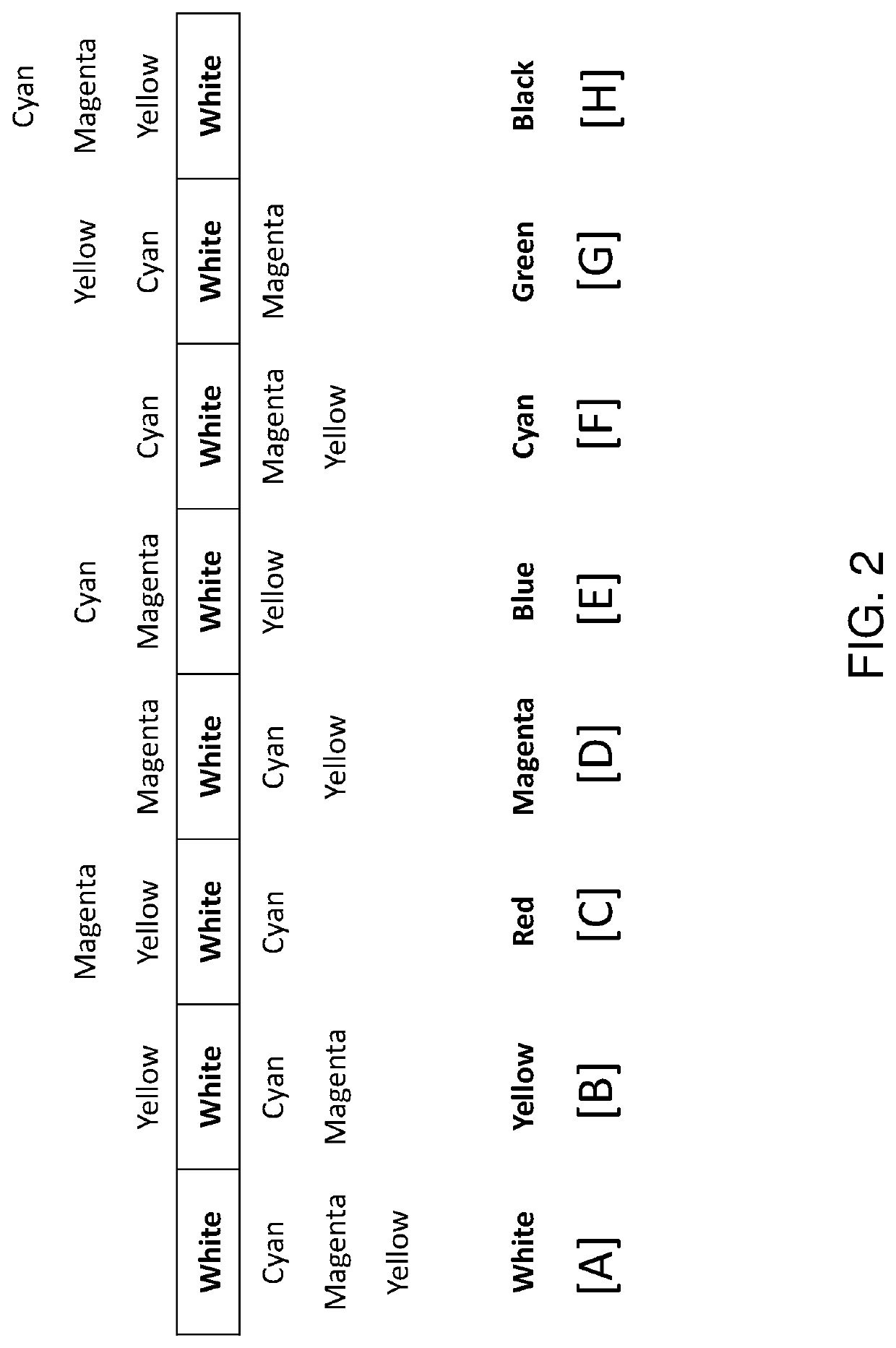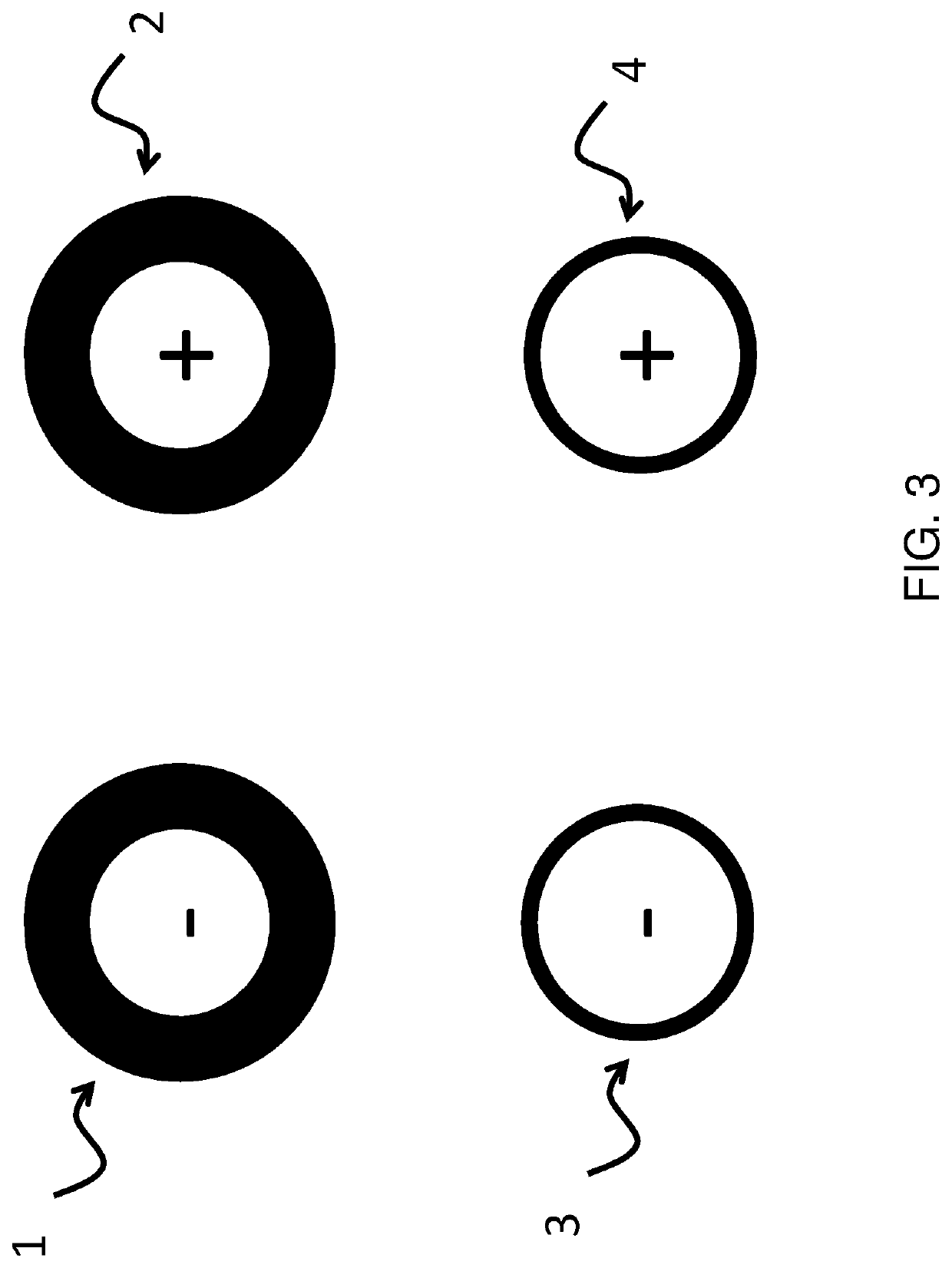Drivers providing DC-balanced refresh sequences for color electrophoretic displays
a technology of color electrophoretic display and refresh sequence, which is applied in the direction of instruments, static indicating devices, etc., can solve the problems of gas-based electrophoretic media being susceptible to the same types of problems, preventing their widespread use, and reducing the service life of these displays, so as to achieve a faster update speed, less energy, and a larger color gamut
- Summary
- Abstract
- Description
- Claims
- Application Information
AI Technical Summary
Benefits of technology
Problems solved by technology
Method used
Image
Examples
Embodiment Construction
[0054]As indicated above, the present invention may be used with an electrophoretic medium which comprises one light-scattering particle (typically white) and three other particles providing the three subtractive primary colors. Such as system is shown schematically in FIG. 2, and it can provide white, yellow, red, magenta, blue, cyan, green, and black at every pixel.
[0055]The three particles providing the three subtractive primary colors may be substantially non-light-scattering (“SNLS”). The use of SNLS particles allows mixing of colors and provides for more color outcomes than can be achieved with the same number of scattering particles. The aforementioned U.S. Pat. No. 8,587,859 uses particles having subtractive primary colors, but requires two different voltage thresholds for independent addressing of the non-white particles (i.e., the display is addressed with three positive and three negative voltages). These thresholds must be sufficiently separated for avoidance of cross-ta...
PUM
| Property | Measurement | Unit |
|---|---|---|
| negative offset voltage | aaaaa | aaaaa |
| voltage | aaaaa | aaaaa |
| addressing voltages | aaaaa | aaaaa |
Abstract
Description
Claims
Application Information
 Login to View More
Login to View More - R&D
- Intellectual Property
- Life Sciences
- Materials
- Tech Scout
- Unparalleled Data Quality
- Higher Quality Content
- 60% Fewer Hallucinations
Browse by: Latest US Patents, China's latest patents, Technical Efficacy Thesaurus, Application Domain, Technology Topic, Popular Technical Reports.
© 2025 PatSnap. All rights reserved.Legal|Privacy policy|Modern Slavery Act Transparency Statement|Sitemap|About US| Contact US: help@patsnap.com



